It is simply telling you that during the assign-recompute iterations, a cluster became empty (lost all assigned points). This is usually caused by an inadequate cluster initialization, or that the data has less inherent clusters than you specified.
Try changing the initialization method using the start option. Kmeans provides four possible techniques to initialize clusters:
- sample: sample K points randomly from the data as initial clusters (default)
- uniform: select K points uniformly across the range of the data
- cluster: perform preliminary clustering on a small subset
- manual: manually specify initial clusters
Also you can try the different values of emptyaction option, which tells MATLAB what to do when a cluster becomes empty.
Ultimately, I think you need to reduce the number of clusters, i.e try K=2 clusters.
I tried to visualize your data to get a feel for it:
load matlab_X.mat
figure('renderer','zbuffer')
line(XX(:,1), XX(:,2), XX(:,3), ...
'LineStyle','none', 'Marker','.', 'MarkerSize',1)
axis vis3d; view(3); grid on
After some manual zooming/panning, it looks like a silhouette of a person:

You can see that the data of 307200 points is really dense and compact, which confirms what I suspected; the data doesnt have that many clusters.
Here is the code I tried:
>> [IDX,C] = kmeans(XX, 3, 'start','uniform', 'emptyaction','singleton');
>> tabulate(IDX)
Value Count Percent
1 18023 5.87%
2 264690 86.16%
3 24487 7.97%
Whats more, the entire points in cluster 2 are all duplicate points ([0 0 0]):
>> unique(XX(IDX==2,:),'rows')
ans =
0 0 0
The other two clusters look like:
clr = lines(max(IDX));
for i=1:max(IDX)
line(XX(IDX==i,1), XX(IDX==i,2), XX(IDX==i,3), ...
'Color',clr(i,:), 'LineStyle','none', 'Marker','.', 'MarkerSize',1)
end

So you might get better clusters if you first remove duplicate points first...
In addition, you have a few outliers that might affect the result of clustering. Visually, I narrowed down the range of the data to the following intervals which encompasses most of the data:
>> xlim([-500 100])
>> ylim([-500 100])
>> zlim([900 1500])
Here is the result after removing dupe points (over 250K points) and outliers (around 250 data points), and clustering with K=3 (best of out of 5 runs with the replicates option):
XX = unique(XX,'rows');
XX(XX(:,1) < -500 | XX(:,1) > 100, :) = [];
XX(XX(:,2) < -500 | XX(:,2) > 100, :) = [];
XX(XX(:,3) < 900 | XX(:,3) > 1500, :) = [];
[IDX,C] = kmeans(XX, 3, 'replicates',5);
with almost an equal split across the three clusters:
>> tabulate(IDX)
Value Count Percent
1 15605 36.92%
2 15048 35.60%
3 11613 27.48%
Recall that the default distance function is euclidean distance, which explains the shape of the formed clusters.



